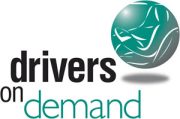Every year about 5000 work transport accidents occur in the workplace, which results in about 50 fatalities. Employers have a legal duty to ensure that the health and safety of their employees, contractors and general public are not put at risk. The main causes of the injuries are people falling off vehicles and being struck or crushed by them.

There are three key areas to consider when carrying out your risk assessment. These are:
- Safe Site (design & activity)
- Safe Vehicle
- Safe Driver
Safe Site (design & activity)
Every site is different and is likely to present different hazards and risks. However, if you take the following steps, you will minimise the risk of accidents;
- Make sure the road is wide enough for the safe movement of the largest vehicle.
- Ensure surfaces are suitable for the vehicles and pedestrians using them, for example firm, even and properly drained. Outdoor traffic routes should be similar to those required for public roads.
- Avoid steep slopes.
- Keep routes clear of obstructions.
- Make sure they are clearly marked and signposted.
- Avoid sharp corners and blind bends
- Suitable segregation of vehicles and people, like separate pedestrian and traffic routes.
- If segregation is not possible, you need to clearly mark pedestrian and traffic routes using measures such as barriers and signs
- One way system will reduce the need for drivers to reverse. About a quarter of all workplace transport accidents occur when vehicles are reversing
- There should be a separate entrances and exits for vehicles and pedestrians
- Where pedestrians and traffic routes cross, they should be clearly marked using measures such as kerbs, barriers, deterrent paving, etc. to help direct pedestrians to the appropriate crossing points.
- Signs for drivers and pedestrians in a workplace should be the same as those used on public roads. Where driving is likely to be carried out in the dark, illuminated or reflective signs should be used. White road markings should be used to regulate traffic flow, and yellow markings should be used for parking.
- Keep roads properly maintained
- Visibility should be good enough for drivers to see hazards, and pedestrians to see vehicles. Adequate visibility for drivers is related to vehicle speed and the distance needed to stop or change direction safely. Consider having mirrors where sharp or blind bends cannot be avoided. Every workplace should have suitable and sufficient lighting, particularly in areas where vehicles manoeuvre, or pedestrians and vehicles circulate and cross, and also loading and unloading areas.
- Reducing vehicle speed is an important part of workplace transport safety. Fixed traffic control measures such as speed humps, chicanes and ‘rumble strips’ can reduce vehicle speed. Speed limits can also be used, but they need to be appropriate, properly enforced and, where possible, consistent across the site. To assess an appropriate speed limit, consider the route layout and its usage. For example, lower speeds will be appropriate where pedestrians are present or where lift trucks and road-going vehicles share a traffic route.
- Parking areas should be clearly indicated and there should be separate parking areas for commercial and private vehicles. There should also be designated areas where commercial vehicles can be loaded and unloaded.
Safe vehicle
Vehicles used in the workplace should be suitable for the purpose for which they are used. You should carefully consider the working environment in which a specific vehicle will be used and the suitability of that vehicle for the people using it. Other risk assessment issues to consider are:
- Some workplace vehicles like forklift trucks may be fitted with rotating beacons and reversing alarms and conspicuous painting and marking to make it stand out to pedestrians.
- Drivers should be able to see clearly around their vehicle, so consider measures such as CCTV and special mirrors where visibility is restricted.
- Vehicles should be designed so that, wherever possible, those who use them can do their work from the ground. Where people have to work at height on vehicles, suitable means of safe access onto and around vehicles should be provided.
- Vehicles should be maintained in good working order so they remain mechanically sound, and any devices, such as flashing beacons, function properly.
- Drivers should be provided with a list of the daily checks to be signed off at the start of each shift. This should be monitored to ensure the checks are carried out properly.
Safe driver
Drivers should be competent to operate a vehicle safely and receive appropriate information, instruction and training for the vehicle they use. Other risk assessment issues to consider are:
- It is particularly important that younger or less experienced drivers are closely monitored following their training to ensure they work safely.
- Training requirements will depend on an individual’s experience and the training they have previously received. Your risk assessment should help decide the level and amount of training a person requires.
- You should keep a training record for each driver. This will help to ensure the most appropriate person is allocated a particular task and identify those requiring refresher training.
This is by no means a comprehensive list. You will find more information by clicking on the following links:
https://www.hse.gov.uk/pubns/indg199.pdf
https://www.hse.gov.uk/pubns/priced/hsg136.pdf
Contact Drivers on Demand – for all your Driver needs – contract, temporary or permanent positions – one call sorts it all
Drivers on Demand, 6 Steele Road, Park Royal, London, NW10 7AR
Click here to email us, Tel: 020 8453 3444, Fax: 020 8453 3445
